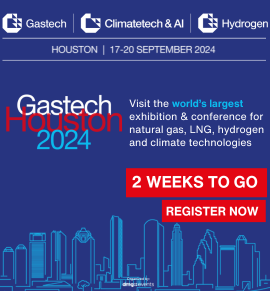May 10, 2024 [EIA]- U.S. West Coast refiners are using more hydrogen purchased from merchant suppliers than from their own production. From 2012 to 2022, hydrogen purchased by refiners in the region increased 29% to about 550 million cubic feet per day (MMcf/d). Over the same period, on-site refinery-produced hydrogen production from natural gas fell 20% to about 330 MMcf/d. Merchant suppliers accounted for more than 62% of the hydrogen consumed by West Coast refineries in 2022.
Hydrogen demand in the U.S. refining industry increased significantly from 2006 to 2010 as ultra-low sulfur diesel (ULSD) was phased in for all on-road diesel. Hydrogen is particularly important in processing low-grade, sour crude oil slates with high sulfur contents. Refineries typically fulfill incremental hydrogen demand by either producing it themselves on-site through steam methane reforming of natural gas or by purchasing it from merchant suppliers.
The trend toward greater use of purchased hydrogen is also evident nationwide but on a smaller scale. Merchant suppliers met 70% of U.S. refinery hydrogen demand in 2022, the highest percentage since we began publishing these data in 2009. For comparison, merchant suppliers met 63% of U.S. refinery hydrogen demand in 2019.
Merchant-supplied hydrogen for petroleum product and renewable diesel production originates from industrial processes where it is a by-product; industrial natural gas producers use steam methane reformers (SMRs) to convert natural gas feedstock into hydrogen. These third-party industrial natural gas producers are sometimes outside of the refinery, but some own and operate the SMR units inside the refinery.
By-product hydrogen can be obtained from a chemical plant or other facility where hydrogen is not the main product. In the chemical industry, for example, the chlor-alkali industry produces hydrogen as a by-product of chlorine production, and petrochemical plants release hydrogen as a by-product of olefin production. According to an internal 2018 EIA study, by-product hydrogen accounts for at least 50% of all hydrogen purchased by U.S. refineries and at least 30% of all hydrogen that refineries need that is not produced from by-product reforming.
Refineries also use hydrogen coming off their own catalytic reformers; however, we do not collect these data because hydrogen input from refinery reformer units is counted indirectly as crude oil and unfinished oil inputs. We only collect data on hydrogen produced by SMR units.
Free Trial: Access 13,300 Tank Terminal and Production Facilities
13,300 tank storage and production facilities as per the date of this article. Click on the button and register to get instant access to actionable tank storage industry data










